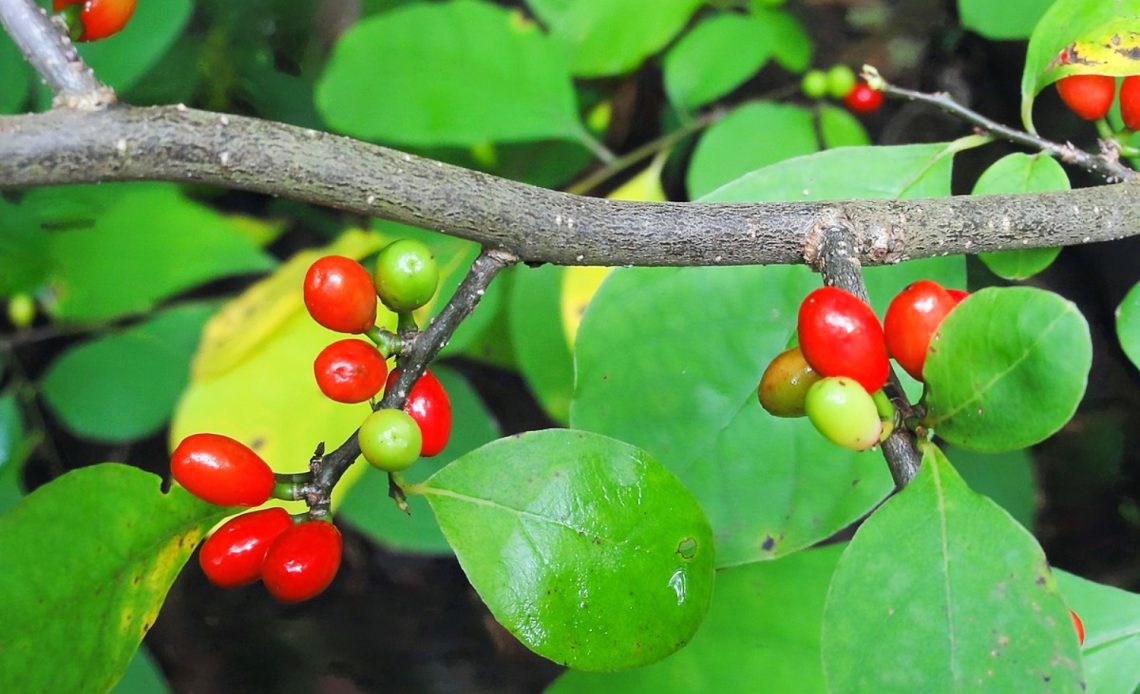

We’re here to help! Wild Yards is a completely free website that is 100% dedicated to helping you create a wildlife-friendly, sustainable yard. Read more
WildYards is reader-supported. When you buy a product through a link on our site, we may earn a comission. Every product is independently selected by our (obsessive) editors and our reviews are unbiased and objective. Read more about our mission or our privacy policy.
You never know what you’re going to find in your backyard.
From bright orange mushrooms to red-headed woodpeckers, there’s always something amazing waiting for you in the great outdoors.
If you live in a wooded area, consider yourself lucky! Woodlands and forests contain a wide variety of trees, shrubs, and other flowering and fruiting plants.
Some of these plants are edible and can be harvested to use in the kitchen.
Spicebush, for instance, is a favorite among backyard foragers. This citrusy, sweet-smelling shrub thrives in wooded areas and produces bright red berries that birds, squirrels, and other animals enjoy.
But can people eat spice berries, too? If so, what do they taste like, and what can they be used for?
Spice berries are edible, and have a potent flavor that is warm, sweet, and pairs well with a variety of other warming spices. You can use spice berries to make savory dishes like curries, chilis, and casseroles.
What are spice berries?
Spice berries are the berries of the spicebush (Lindera benzoin), also known as wild allspice.
These understory shrubs are native to North America and can be found growing wild in the east, from Maine to Florida and as far west as Texas, Kansas, and Iowa.
You can usually find a few spicebushes growing on the outskirts of deciduous forests, where they can soak in some dappled sunlight.
These plants are deciduous themselves and are so fragrant that they can sometimes be smelled before they’re spotted.
The foliage of the spicebush has a fresh, citrusy scent, much like walking by the lemons and oranges at the grocery store, but a bit spicier.
Mature spicebushes reach 6’ to 12’ tall on average and produce oval leaves with a smooth finish and slightly wavy margin. Leaves measure roughly 2 to 5 inches.
Plants flower in spring before new leaves emerge. The spicebush produces green to yellow blossoms in clusters along bare branches.
The plant’s sweet-smelling flowers are very popular with insects, especially bees, who benefit from this early source of pollen and nectar.
After the flowers have been pollinated, the blossoms give way to fruits. Spice berries start out a shiny green, and turn red as they ripen.
As summer turns to fall, the plants prepare for their dormant period. Their shiny green leaves turn bright yellow before falling off.
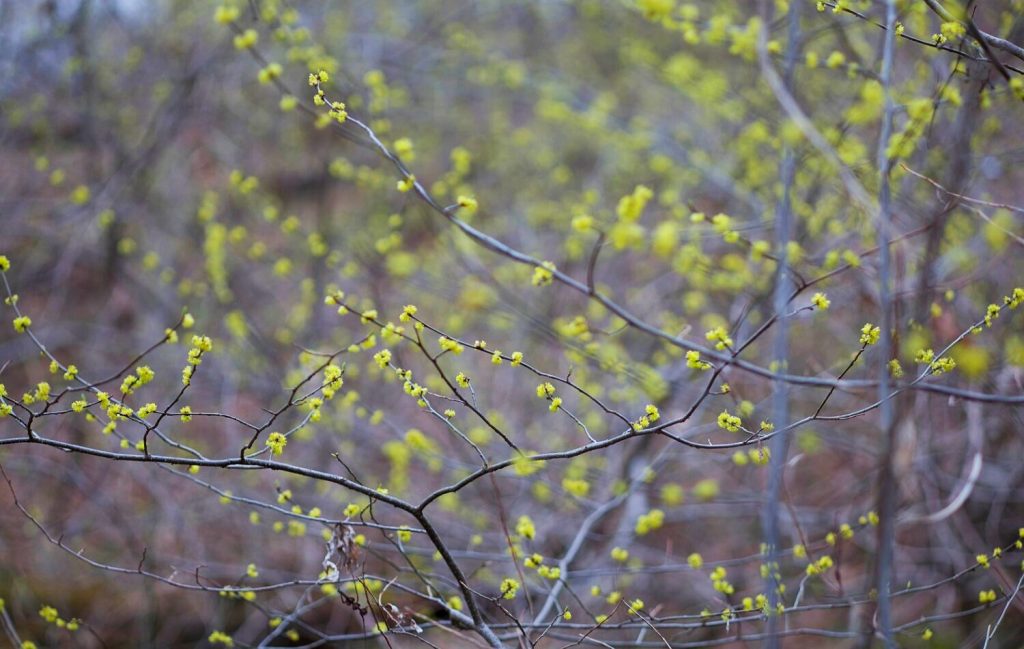
Which parts of the spicebush are edible?
Not only are spice berries edible but the leaves, stems, and flowers of the plant can be gathered to enjoy as well.
You can harvest foliage and roots from the plant at any time, but it’s best to do so in spring, while the shrub is actively growing.
Harvesting foliage in spring also allows you to enjoy the tender new foliage before spicebush swallowtail butterfly larvae get a chance to chew holes into the leaves!
The foliage of the plant contains volatile oils that have potent antifungal properties.
Fresh leaves and twigs can be harvested to make a tincture to treat athlete’s foot and candida infections.
Simply simmer a handful of fresh twigs and roots for 20 to 30 minutes, then dab the resulting liquid on the affected area.
Spicebush tea made from the plant’s foliage is another popular home remedy and is commonly used to treat digestive ailments.
Tea made from the spicebush’s foliage is pleasant and mild. Its spicy, warming qualities make it an excellent choice in winter or before bedtime.
Leaves and stems can be dried and added to anything from savory dishes like soups and stews to sweet treats like ice cream.
The flavor of dried spicebush leaves is so versatile, it works well in a number of dishes. If you’ve never tasted spicebush, it carries notes of cardamom, pepper, nutmeg, and bay that can enhance any dish.
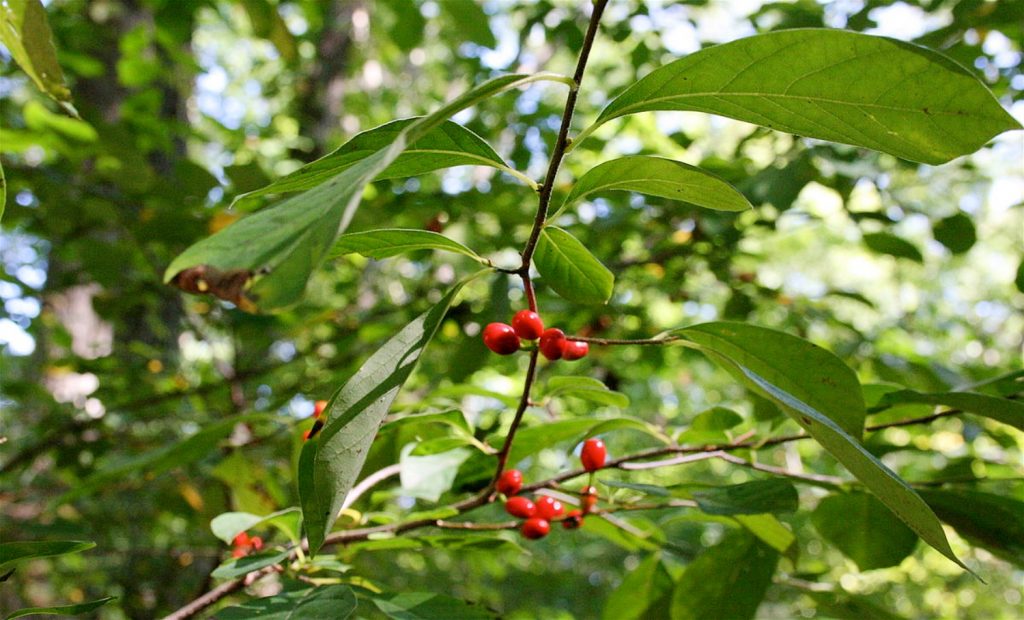
What can you do with spice berries?
Like other parts of the spicebush, spice berries can be used for all sorts of things.
If you’ve never tasted these vivid red berries before, the best way to experience their flavor profile is simply to brew them into a tea.
Be sure to select red berries for your brew. There’s nothing wrong with eating green berries, but ripe spice berries have a much more potent flavor.
Spice berry tea is warm and peppery, with hints of allspice and just a dash of heat. A splash of milk helps cut the spice and enhances the flavor perfectly.
If tea isn’t your thing, the berries can be dried in a food dehydrator and used to season your favorite home-cooked meals.
Try using spice berries in a red curry, or use them to make chili, paella, jambalaya, mole, and other warm, zesty dishes.
Dried spice berries are perfect for making dry rubs as well. Mix spice berries with cumin, chili powder, brown sugar, salt, onion powder, garlic powder, and paprika to create a flavorful season mix for ribs, steaks, chicken, and more.
Spice berries definitely work with savory foods. But they can be used in desserts, too. Fresh berries are a delicious addition to ice creams, apple pies, fruit crumbles, and strudels.
The sky’s the limit with this versatile berry, you just have to let your creative culinary juices flow!
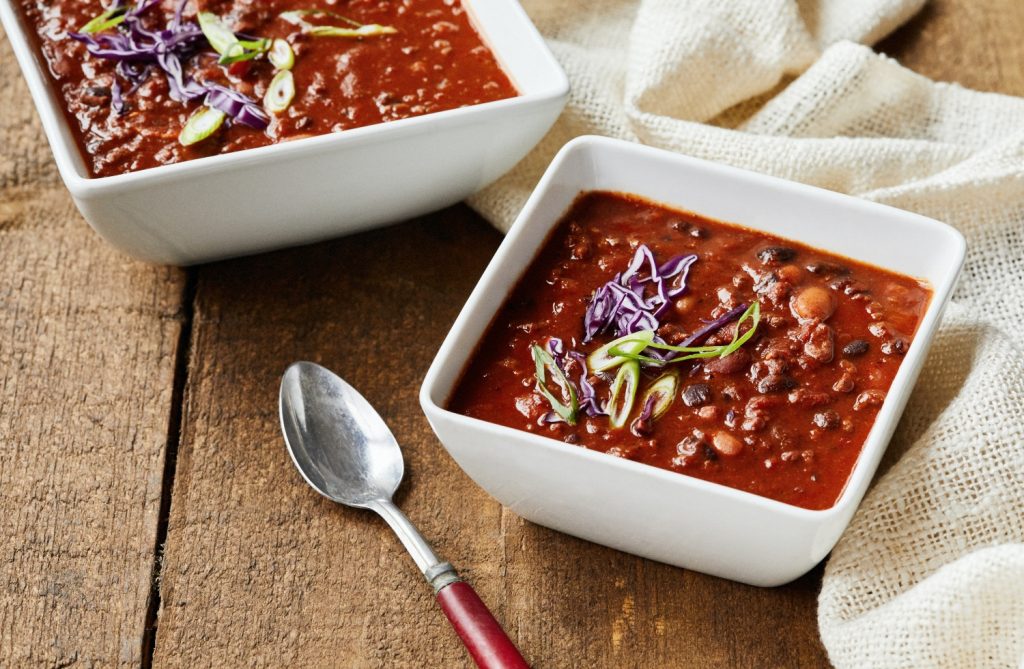
When are spice berries ready to be harvested?
The spicebush flowers in spring. If you’re a forager, that’s a good time to scout out your local hiking trails to locate a few of these shrubs for later.
After flowering, the plants turn their attention toward making berries.
Spice berries begin to ripen in late summer, and can be harvested between August and September.
Once the berries start to ripen, you’ll need to strike while the iron is hot. Spice berries are an excellent food source for a number of animals, including birds.
Thrushes, in particular, seem to enjoy the taste of these vibrant red berries. If they find those spicebushes before you do, there may not be any berries left for you to collect! So don’t miss your opportunity.
Remember to wash the berries off in cool water and allow them to air dry before consuming them.
Extra berries can be stored in the freezer until you’re ready to use them. You can also allow the berries to dry and harvest the seeds to try your hand at starting your own spicebush.
How to grow spice berries in your garden
Spicebush isn’t just a goldmine of flavor for backyard foragers. It’s also an attractive shrub that can be grown as an ornamental.
The plant’s oval, spreading shape makes it well-suited to nature-inspired landscapes, like Japanese zen gardens.
And the spicebush’s vivid yellow foliage makes it an eye-catching accent shrub for more manicured flower beds in autumn.
The spicebush is hardy from zones 4 through 9.
One thing to note is that these plants are dioecious, meaning there are male plants and female plants. You’ll need one of each if you want to harvest berries to use in your cooking.
You’ll also need to make sure that you meet all of the spicebush’s growing requirements. Let’s take a look at them now.
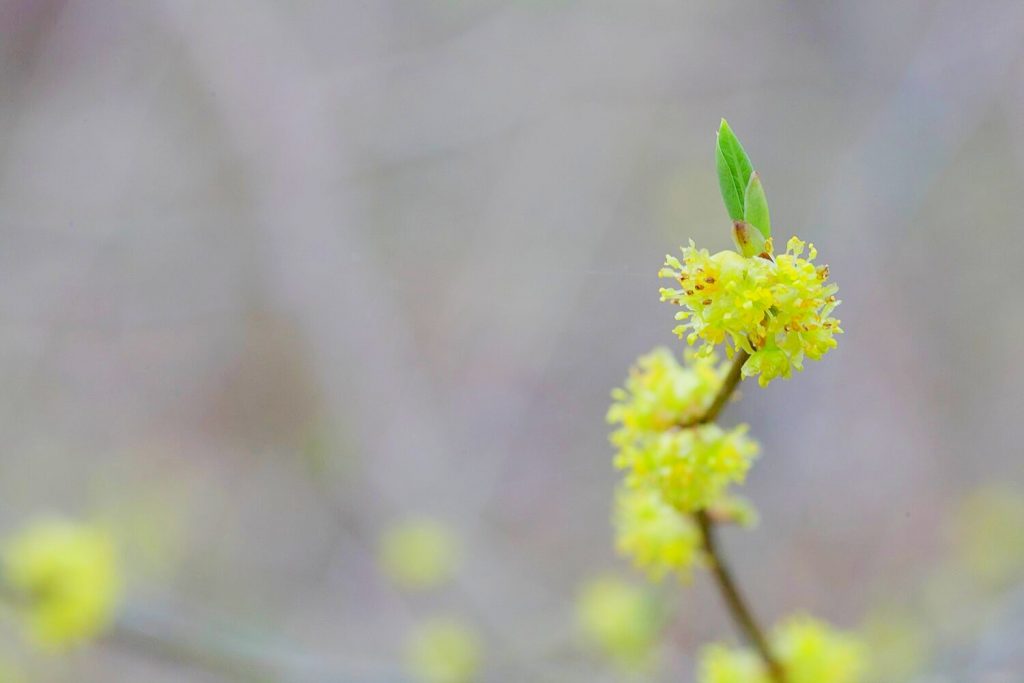
Plant your spicebush in full to partial sunlight
Because spicebushes naturally sprout up on the outer edges of deciduous forests, it’s best to mimic those light conditions as much as possible.
In cooler growing zones, your spicebush will likely be able to tolerate full sun.
In fact, planting your spicebush in full sun will encourage the plant to produce more flowers and fruits.
The flip side to this is that the extra sunlight will result in a slower growth rate and less foliage. So your spicebush may look a bit sparse when it’s not making flowers or berries.
In hotter regions, you’ll need to make sure your spicebush gets some afternoon shade.
Although full sun exposure seems to optimize berry production, high temperatures can cause excessive moisture loss which can stress the plant.
If your spicebush is too stressed, it may not produce many flowers or fruits. So for southern gardens, keep your spicebush in dappled afternoon shade to give it a break from the heat.

Make sure the soil is loamy and moist
Spicebush can handle a variety of soil types, from clay to sandy loam to loam.
But if you want the plant to grow as fast as possible, you’ll need to keep it in loose soil that drains well, but is also rich in decaying organic materials and can be kept moist to the touch.
Take a closer look at your native soil.
If your soil is moist and loamy, you can amend it with horticultural sand. But it’s worth noting that the spicebush is very tolerant of excess moisture.
These shrubs can often be found growing in lowland areas that experience seasonal flooding.
As long as your soil doesn’t stay sopping wet for months at a time, it probably doesn’t need to be amended at all.
If your soil is sandy and excessively loose or full of clay and overly compacted, add a healthy dose of compost to break things up.
You can also add other organic materials, like alfalfa pellets, feather meal, worm castings, and fish emulsion to make the soil more nutritious.
Adding a variety of organic matter will help give loose soils structure, and prevent clay-rich soils from becoming compacted.
Your spicebush will also benefit from the added nutrients, and the extra moisture these materials allow the soil to retain.
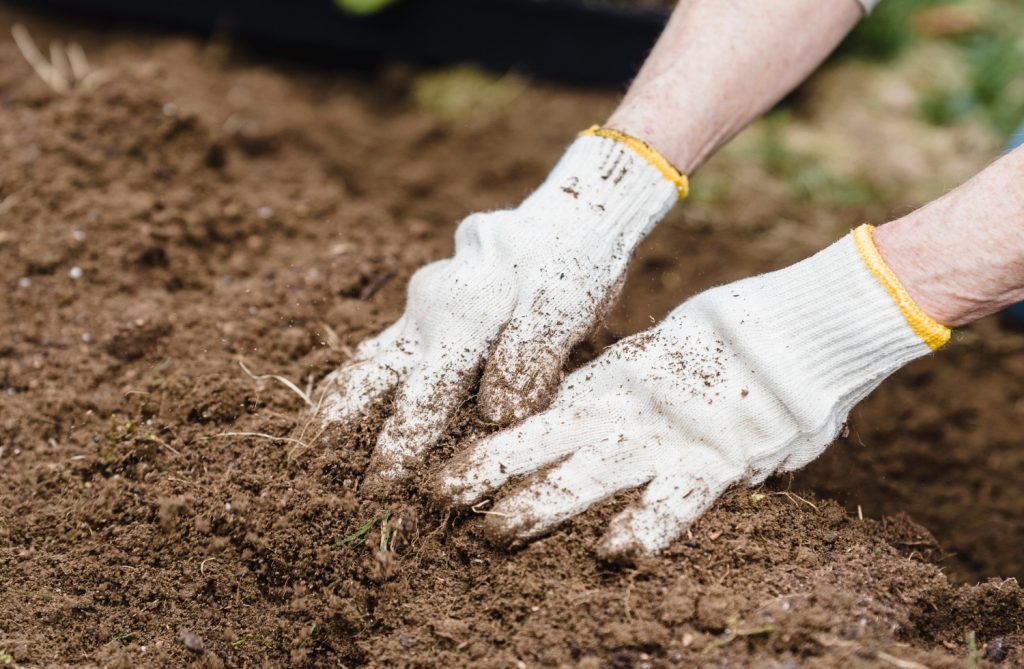
Water your spicebush regularly
As we said a minute ago, spicebushes can tolerate extra moisture. It’s hard to overwater these shrubs.
So if you have a low spot in your yard that always holds water, that would be a good spot for your spicebush.
Otherwise, you’ll need to make sure you water your spicebush regularly.
Leave the hose on your spicebush for around 5 minutes at least once a week. Watering the plant’s deepest roots will encourage a strong root system.
Young plants and/or plants that have been newly transplanted require more frequent watering.
Be sure to keep the soil around your spicebush moist until you see new growth. This indicates that the plant is getting established in its new home.
Although spicebushes certainly benefit from frequent waterings, mature plants are also somewhat drought tolerant, especially when planted in partial shade.
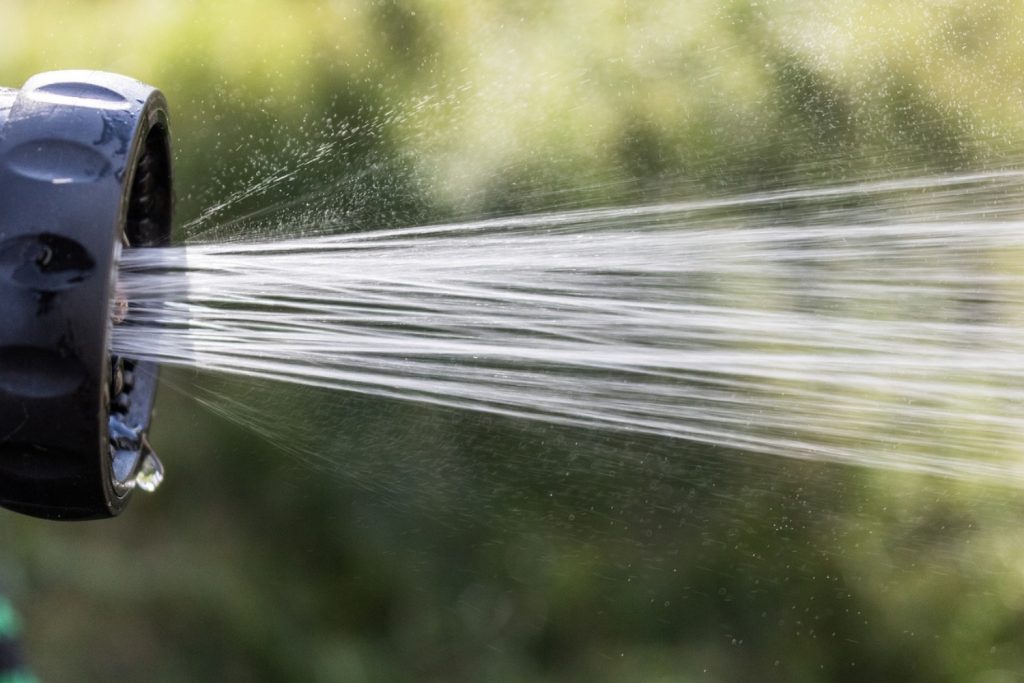
Apply an organic mulch
Spreading a layer of organic wood chip or bark mulch made from deciduous trees like oaks will mimic the conditions of the spicebush’s native forest environment.
Using mulch helps seal moisture into the soil. It also regulates soil temperature, keeping your spicebush’s roots warm in the winter, and cool in the summer.
Overall, mulch will help keep your spicebush hydrated and cut down on watering time.
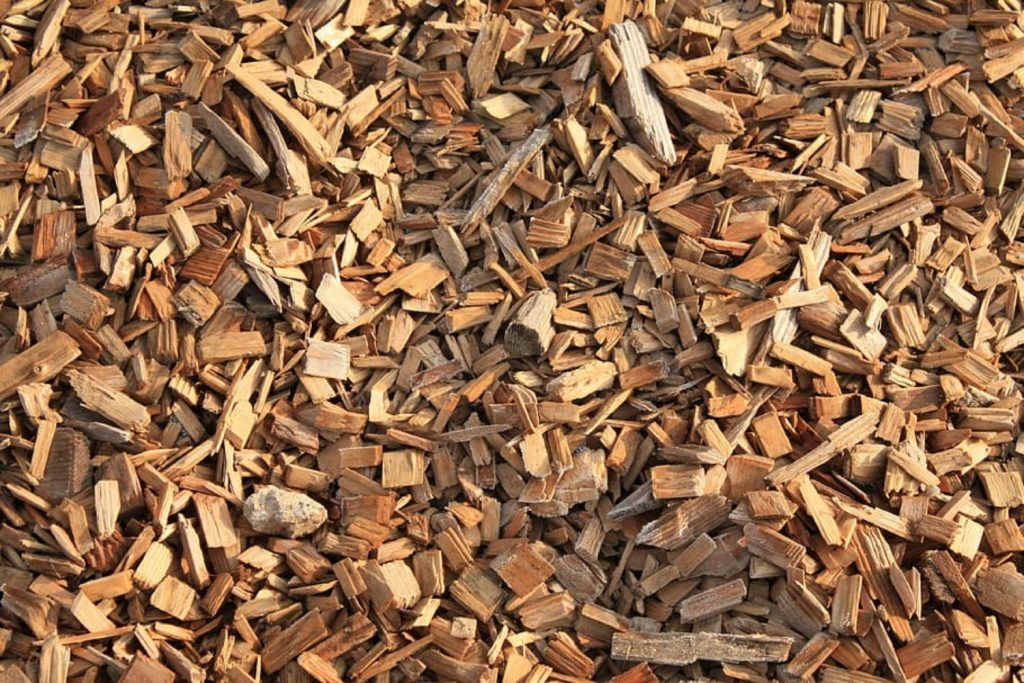
Fertilize annually
If you amended your soil with organic materials before planting, that will help your spicebush get established.
But feeding the plant a balanced NPK fertilizer annually will also support healthy flower and fruit production.
Triple 14 will provide your spicebush with enough nitrogen, phosphorus, and potassium to produce healthy new foliage, fragrant blossoms, and plenty of berries.
If your soil has decent levels of nitrogen and potassium, then simply sprinkle a tablespoon or two of bone meal around the base of the plant in early spring.
Ensuring your spicebush gets plenty of phosphorus is key to cultivating a healthy crop of spice berries.
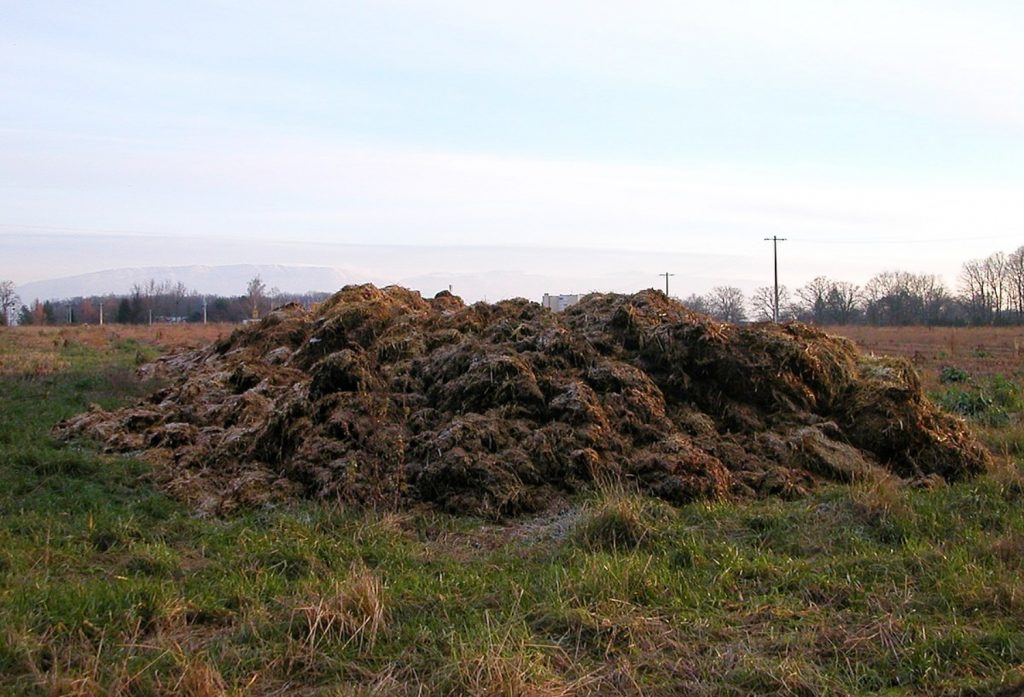
Prune plants as necessary
As long as all of the plant’s growing requirements are met, your spicebush will grow just fine without any extra attention from you.
But pruning this shrub every so often supports healthy new growth.
Prune your spicebush in late winter to early spring. Remove deformed and/or broken branches, and take the opportunity to shape the plant a bit.
Thin the branches as needed to support air circulation.
Shaping the plant and removing extra stems stimulates new growth, while also improving airflow to prevent fungal infections and diseases.
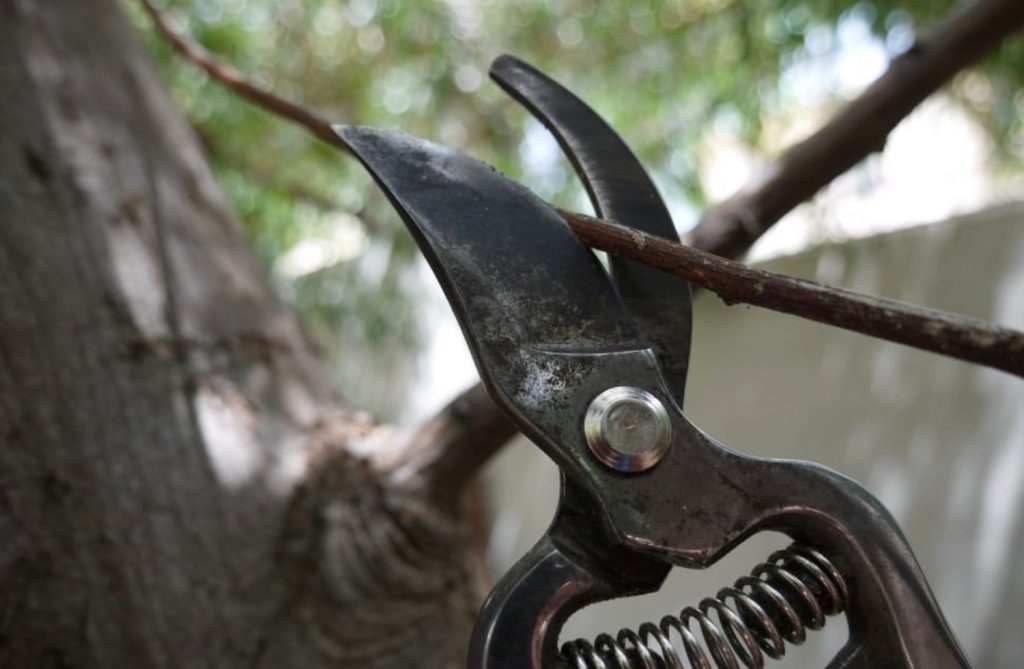
What are the benefits of growing spice berries?
Many animals rely on spice berries as a food source.
Pollinators like beetles, butterflies, and bees also enjoy visiting spicebushes for their fragrant flowers.
This plant’s extensive root systems can help control erosion if you have a sloped front yard.
And their ornamental value allows them to enhance the visual appeal of your landscape.
Overall, spice berries are a tasty addition to your cooking, and the shrubs themselves are easy to grow. These plants have much to offer, from supporting your local ecosystem to enhancing your favorite home-cooked meals.
